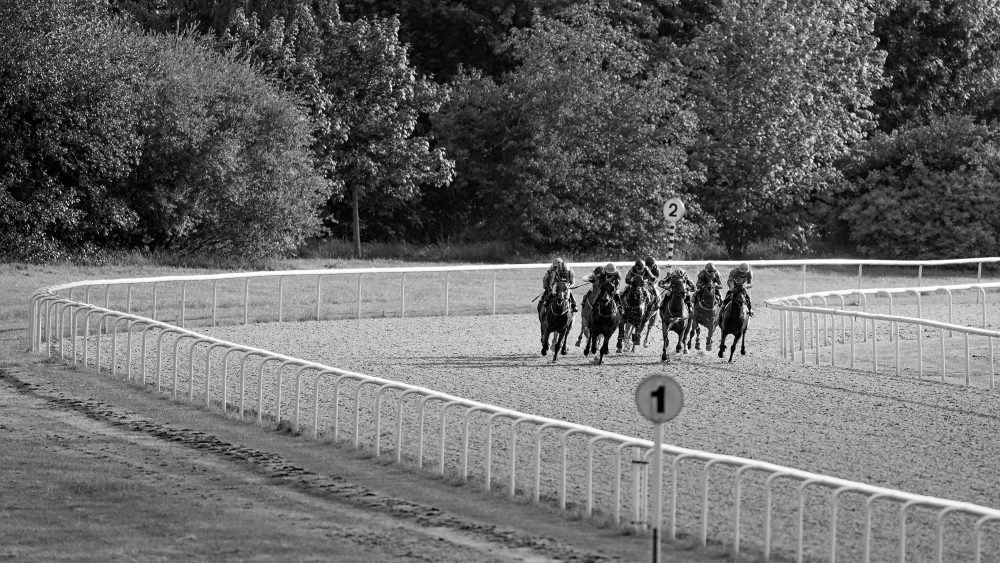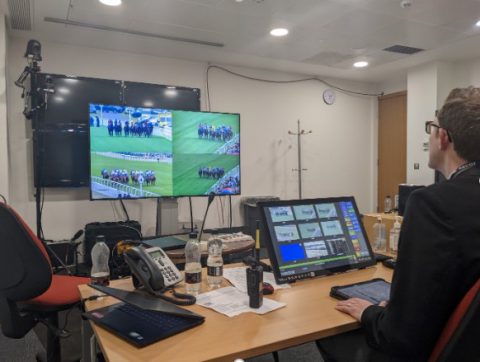Inside The Stewards’ Room: How Races Are Officiated

Every year in Britain, around 1,500 fixtures are staged under the watchful eye of a team of stewards whose job it is to ensure meetings take place fairly and in line with the Rules of Racing.
While some historical views persist regarding the nature of stewarding panels and how stewards go about their jobs, the reality is that stewarding in Britain reflects a modern approach to regulation, in line not only with other jurisdictions worldwide but other sporting bodies.
This blog will seek to give a better understanding of the work undertaken by stewards on a daily basis, and the technology available to them as they seek to ensure British racing is as safe and fair as it can be.
Panel composition
In 2019, a new stewarding model was introduced to British racing, combining the best elements of the historical, majority-voluntary system with a majority-professional approach that sought to increase consistency, transparency and accountability.
This new model was delivered with the approach that raceday officiating should function as ‘one team’, with consistent standards and expertise, along with professional development of stewards.
As a result of the change, at every meeting in Britain you will now find:
- BHA Chief Steward
- Stewards’ Panel Chair
- BHA Steward
- BHA Assistant Steward
- BHA Raceday Assistant
While the Stewards’ Panel Chair is voluntary (formerly known as an Honorary Steward), the others listed above are full-time BHA employees, with the voting Panel on a raceday comprising the BHA Chief Steward, the Stewards’ Panel Chair and other BHA Steward.
On a raceday, the BHA Chief Steward is ultimately accountable for all regulatory matters that may occur and is the individual answerable for all decisions of a given Panel. Alongside their fellow BHA Steward, they ensure the approach to assessing each incident is undertaken with consistency and fairness, within a clear framework of guidance to underpin the application of the Rules.
The Stewards’ Panel Chair, meanwhile, brings to the Panel the best of the former system, using their wealth of experience and independence of thought to bring an alternative voice as the three-person Panels reach decisions on incidents throughout a day.
Technology
A lot can happen during the course of a race and so at every course in the country, stewards have access to state of the art technology that allows them to watch and re-watch races from a variety of angles and in minute detail.

As can be seen in the above image, taken during Royal Ascot, stewards are able to watch races on a large, high-definition monitor, with as many as four angles playing simultaneously, allowing them to view incidents in a syncronised manner.
Using the console seen on the table above, as well as a hand-held control obscured from view here, stewards are able to call up any moment in a race, playing over from multiple angles, zooming in as necessary, not only during their own deliberations, but when holding enquiries with jockeys, trainers or racecourse officials.
Combined with their professional experience and training, access to such technology is vital in allowing our stewards to correctly apply the Rules of Racing and determine penalties where appropriate.
Interference
Among the most important of the responsibilities of a stewarding panel is their role in adjudicating upon incidents where interference has or may have occurred during a race, and potentially had an impact on the placings.
Like any major sport, vibrant debate can surround such incidents, particularly on the biggest days in the calendar when meetings are subject to significant coverage.
Among all this, it is the job of the Stewards to correctly identify what has taken place and to take the appropriate action, something they are qualified to do by virtue of their professional training and significant experience in race reading.
A procedure is followed in each instance whereby the Chief Steward will ask the Panel to consider whether interference has taken place, and if so, who caused it. If this cause is established, following a summing up from the Chief Steward, the Panel must consider whether the nature of the incident was such as to place in serious jeopardy the safety of any horse or rider.
This process follows a hierarchical order, set out HERE, which seeks to establish first and foremost whether the most serious offence of dangerous riding has occurred.
The subject of dangerous riding can be an emotive one but an understanding of the Rules and what is asked of the Stewards is key to understanding when a finding of dangerous riding would be appropriate and importantly, the test for establishing whether dangerous riding has taken place is a two-part one.
For dangerous riding to be found, a rider must cause serious interference, which is defined as causing a horse and/or rider to fall or very nearly fall or cause a horse to be seriously hampered, for example to be pushed up against a running rail or nearly off the course.
This alone is not sufficient to find dangerous riding, as similar consequences could also be caused by careless or improper riding, or could indeed even be accidental. There must also be culpability on the part of the rider in terms of the quality of their riding, examples of which include that the manoeuvre involved purposefully interfering with another rider, or that it should have been obvious that this was likely to endanger the safety of another rider.
Where dangerous riding is found, the result must be disqualification of the horse who caused the incident.
Prior to Britain’s transition to the current model for dealing with interference, that preferred by the International Federation of Horseracing Authorities (IFHA), a number of high-profile incidents resulted in what many felt where unsatisfactory outcomes, such as when Jardines Lookout was disqualified under an old rule of ‘irresponsible riding’ having past the post first in the Melrose Stakes of 2000.
This and other examples caused considerable debate and led to an alteration of the Rules to make it much harder for horses appearing clearly to have won on merit to be disqualified. It is instructive, therefore, to consider how we came to arrive at our current position and the potential pitfalls of lowering the threshold for an offence punishable by disqualification.
Such a view is not unique to Britain and in terms of the big picture when it comes to interference, the position that the best horse on the day should be the winner is one shared by almost every major racing nation. Indeed, this approach is supported and promoted by the International Federation of Horseracing Authorities (IFHA). Other than in the USA and Canada, every major racing nation applies the same model as in Britain, with the likes of Japan, France and Germany all having transitioned to the British approach in recent times. It’s worth noting that from September one State in the USA will transition to the IFHA preferred model, and it’s expected that others may follow.
British stewards will amend placings where they feel it is appropriate in the event of interference having taken place, with some 40 results having been amended in 2021.
